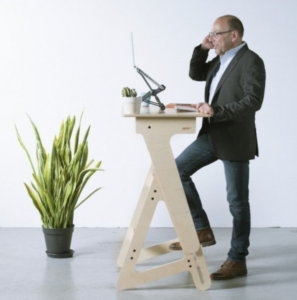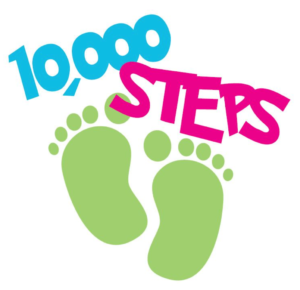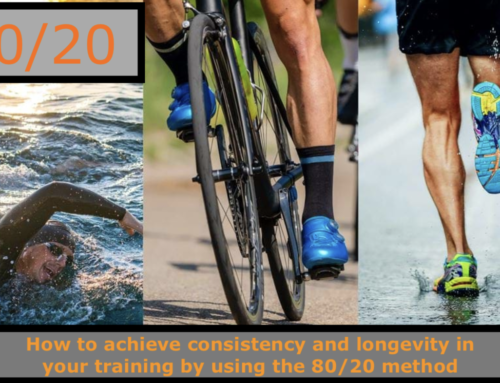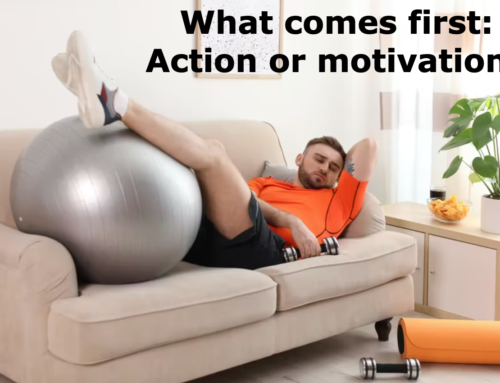Do you train at least 5 days/week, sometimes twice a day? If so, you might think that the answer to this question is obvious. “No, of course I’m not an active couch potato!” But think again.
An active couch potato is defined as “an individual who meets the demand for physical activity but still sits down for long periods of the day”. (1) So, despite working out for a minimum of 150 minutes per week at a moderate to vigorous intensity, long periods of sitting can still be bad for your health.
So, what’s the problem?
Your early morning workout followed by many hours perched in front of a computer, or driving, could be worse for you than your less active colleagues who do no formal exercise bar walking the dog, but do potter around the office between water fountain, coffee machine, and the bathroom.
This revelation that despite your above average exercising habits, long periods of sitting can be harmful for your health is probably quite alarming, and rightly so.

a stand up desk would be a good addition to your office
Let me explain in a bit more detail what’s happening to your body during this sedentary time.
The researchers at the University of Queensland who coined the phrase “active couch potato” found that sitting for more than 10 hours per day was associated with higher body mass index and waist circumference, systolic and diastolic blood pressure, total serum cholesterol, triglycerides and non-fasting glucose levels, compared to those reporting a total sitting time of less than 4 hours per day. In a controlled trial, the simple act of replacing sitting with just 2 minutes of walking every 20 minutes was shown to reduce serum insulin and post mealtime blood glucose by 24%, and lower blood pressure by a mean of 2–3 mm Hg. These findings suggest that even those adults who exercise regularly should be encouraged to reduce their daily total sedentary time.
Even professional athletes are not immune. In another study focussing on Premier League footballers (2) researchers found that on average 79% of the players post-training time was sedentary.
Don’t I need rest after my workouts?
No one would argue with the idea that after vigorous training an individual needs to have some less active time for recovery. But if the pendulum swings too far the other way it can become unhealthy.
In fact, gentle activity can help with recovery. You’ll understand this if you’ve ever completed a tough gym session or a hard run followed immediately by a prolonged period of time sitting in the car or at your desk. Everything seems so much tighter afterwards, whereas a period of gentle walking helps restore mobility.
So, what’s the bottom line for you and me?
Your current exercise regime does put you in a far better position than if you did nothing. However, using this as an excuse for sitting down most of the day (at your desk or when travelling) erases some of the bonus points you’ve accrued. There’s a solution and it doesn’t involve much energy, it simply requires you to develop some more habits.
Action Points
- Minimise prolonged sitting. Sit by all means, but don’t stay too long in one place.
- Use a stand up desk.
- Move every 30-60 minutes – There are actually apps that you can download to your phone which remind you to move. The Pomodoro Technique is a productivity system which helps you take the right number of breaks while still getting your work done. Traditionally, it breaks up your day into 25-minute focus sessions followed by five-minute breaks. This article points you to 12 of the best apps.
- Increase your moderate activity – Park the car further away from the shop, use the stairs instead of the lift, swap the car for walking when you’re going less than five minute journey from your house.
- 10,000 steps – You may feel that you get enough exercise already. But having a target of 10,000 steps will encourage you to get up from your desk and move a bit more.

even if you workout regularly, having a 10,000 steps/day target can keep you moving
- On the hour every hour – Once you’ve installed the app you can use it for this purpose. Select one exercise per day and repeat for 60 seconds every hour. Or take 8 exercises and complete one of them for 60 seconds every hour. During a week you can accumulate quite a lot of strength or mobility exercises, and this in itself will reduce your need to find those two elusive 30 minute slots in the gym.
- Phone calls – Do you sit while taking phone calls? How about standing and slowly pacing around, instead? You might be surprised at how many steps you take during a call.
Conclusion
Ultimately, we exercise because we want to lead a healthy life, yet unwittingly we’ve started to make it less healthy. To change course simply requires a slight adjustment to your lifestyle, and will require you to move a bit more often.
The benefits will far outweigh the extra effort. And you can then say with confidence that you are not an active couch potato!
To read more about this, please check out Simon’s blog post on “Are you fit but unhealthy?”. To find out more about Simon’s coaching services, please click here. To purchase Simon’s e-book, How to be a High Performance Human, please click here.
- Owen, Neville1,2; Healy, Geneviève N.1,2; Matthews, Charles E.3; Dunstan, David W.2 Too Much Sitting: The Population Health Science of Sedentary Behavior, Exercise and Sport Sciences Reviews: July 2010 – Volume 38 – Issue 3 – p 105-113 doi: 10.1097/JES.0b013e3181e373a2(
- 2) : Weiler R, Aggio D, Hamer M, et al. Sedentary behaviour among elite professional footballers: health and performance implications. BMJ Open Sport Exerc Med 2015;1: e000023. doi:10.1136/ bmjsem-2015-000023







Leave A Comment